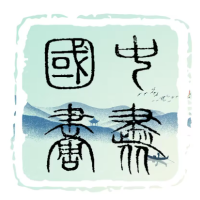娄师白,原名绍怀,字亦鸣,斋号老安馆,籍贯湖南浏阳,生于京师。年十四,拜齐白石为师,研习书画、篆刻及诗词,随师二十五载。齐翁甚爱此徒,赞曰:“娄生少怀,不独作画肖我,且天性酷似,好读书,不争名,不与众伍。”娄师白曾记述:“师为我刻名章,改‘绍’为‘少’,曰‘老者安之,朋友信之,少者怀之’。”更赐号“师白”,意其“他日有成,勿忘师训”,又题室匾曰“老安馆”,治印“老安草堂”。
Luo Shibai, originally named Shaohai, courtesy name Yiming, with the studio name Lao'an Guan, was from Liuyang, Hunan, and born in Beijing. At fourteen, he became a disciple of Qi Baishi, studying calligraphy, painting, seal carving, and poetry, and followed him for twenty-five years. Qi Baishi greatly valued his student, praising him as: "Luo Shaohai not only paints like me but also shares my nature—fond of reading, not seeking fame, and not mingling with the crowd." Luo Shibai recalled, "When the Master carved my name seal, he changed 'Shaohai' to 'Shaohai,' saying 'The old should find peace, friends should trust, and the young should cherish.'” He was also given the name "Shibai," meaning "In future achievements, do not forget the teacher," and his studio was named "Lao'an Guan" with the seal "Lao'an Caotang."


娄师白得齐翁真传,兼能自出新意。其画风简练,然生机盎然,尤擅绘小鸭,艺坛称誉有曰:“齐翁之虾,徐悲鸿之马,李可染之牛,黄胄之驴,娄师白之鸭。”其写意花鸟,上承徐渭、朱耷、扬州八怪,融吴昌硕、陈师曾之精髓,笔墨酣畅,色彩鲜而不俗,雅韵自成,生机盎然,观之如临大化,神采焕发。
丁酉之后,娄师白于齐派基础上,求新变法,自成风格。主张“厚今不薄古,融洋于中”。代表作如《蓖麻》《鸭场》《八哥百合》等,皆入画册,人物山水亦具奇韵,诗刻皆通,堪称多艺。其画风明朗清新,简练生动,生活气息浓厚,哲理暗含,迥异于古人避世孤寂之风。承齐翁之教,风格一脉相承,自觉承继发扬齐派之责,编撰《齐白石绘画艺术》四卷,广受推崇。
Luo Shibai inherited the true transmission from Qi Baishi and was also able to innovate. His painting style is concise yet full of vitality, particularly renowned for his depiction of little ducks, with the art world commenting: "Qi Baishi’s shrimp, Xu Beihong’s horses, Li Keran’s cattle, Huang Zhou’s donkeys, and Luo Shibai’s ducks." His freehand flower-and-bird paintings carry the essence of Xu Wei, Zhu Da, the Yangzhou Eight Eccentrics, as well as Wu Changshuo and Chen Shizeng. His brushwork is vigorous, colors are vivid yet not gaudy, with elegance and vitality, making his works appear grand and spirited.
After the Dingyou year, Luo Shibai built upon the foundation of Qi’s style, seeking innovation and forming his own unique style. He advocated for “valuing the present without neglecting the past, and integrating the foreign within the tradition.” His representative works such as "Castor Bean," "Duck Farm," "Starling and Lily," etc., have been included in art catalogs. His figure and landscape paintings also possess unique charm, and he is proficient in both poetry and seal carving, being recognized for his versatility. His style is clear and fresh, concise and lively, with a strong sense of life and implicit philosophy, differing from the ancient seclusion and aloofness. Adhering to Qi Baishi’s teachings, his style is in line with the Qi tradition, and he conscientiously carries on and promotes Qi’s artistic spirit, authoring the four-volume "Qi Baishi’s Painting Art," which is widely acclaimed.
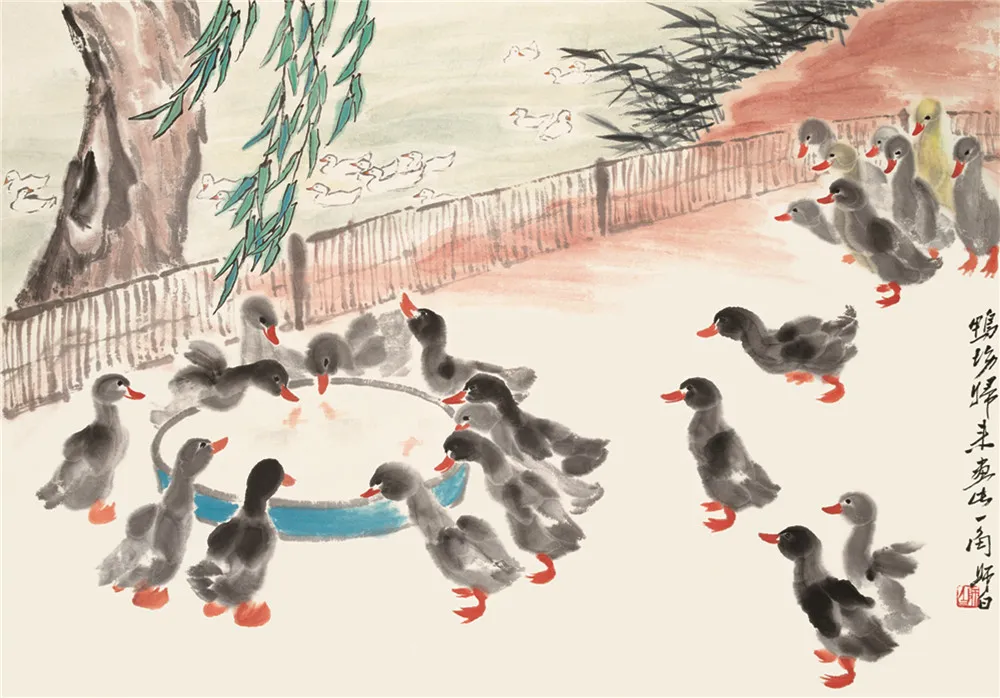
《鸭场一角》为娄师白壬子年(1973年)之作,藏于北京画院。柳下群鸭围盆饮水,画面中心圆盆,雏鸭环绕其侧,右上角亦有小鸭趋近。
形象生动,圆盆布局显鸭群多姿,各角度展现正侧背,低抬头、觅视、饮水,动态各异。娄氏以羊毫斗笔,圆润细腻,笔法果敢,勾画鸭体结构与体积感,羽毛质感尽显。色调朱红描嘴掌,墨色绘身躯,活泼生动。
娄师白之小鸭,毛茸茸者,技法独具。自幼观鸭破壳至蹒跚学步,至欢跃入水游泳,详察鸭之姿态,广作速写,铭记动态于心,成视觉记忆。先于心中再现,继而“迁想妙得”,通过夸张与取舍,突出典型动作,创生传神形象。可见画家之细致观察与勤奋练习,方能寥笔生辉。
"A Corner of the Duck Pond" is a painting by Lou Shibai created in the Year of the Water Rabbit (1973), currently housed at the Beijing Fine Art Academy. The scene depicts a group of ducklings gathered around a round basin of shallow water under a willow tree. The central focus is the feeding basin, surrounded by ducklings, with more ducks approaching from the upper right.
The composition vividly portrays the ducks in various angles—front, side, back, and different head positions, whether feeding or looking around. Lou Shibai employs a goat hair brush with a soft and moist touch, applying bold strokes to capture the body structure and volume of the ducklings, highlighting the unique texture of their feathers. The use of color enhances the liveliness of the scene, with red used for the ducks' beaks and feet, and ink for the bodies, creating a vibrant and dynamic effect.
Lou Shibai’s depiction of ducklings, fluffy and vivid, is a result of his unique methods of brushwork, ink application, and color use. From the moment the ducklings hatch and stumble while learning to walk, to their joyful splashing and swimming, Lou carefully observed their various dynamics from different angles. He created numerous sketches and committed these fleeting moments to memory, forming a visual recollection. By first reproducing these images in his mind and then “transforming and refining” them through bold exaggeration and selective emphasis, he highlighted the most striking actions, creating vivid and expressive artistic representations. This meticulous observation and diligent practice are evident, enabling him to capture the essence with just a few strokes.

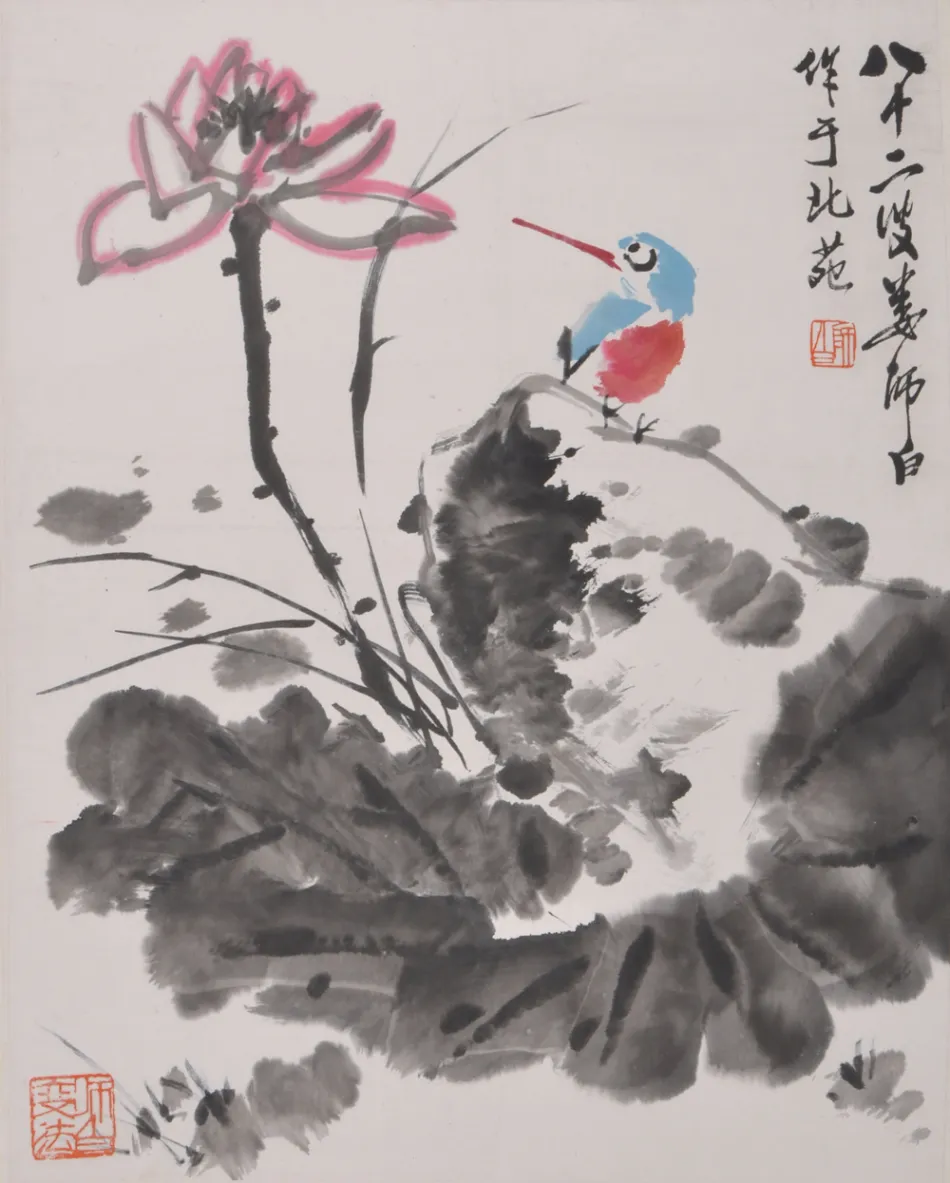
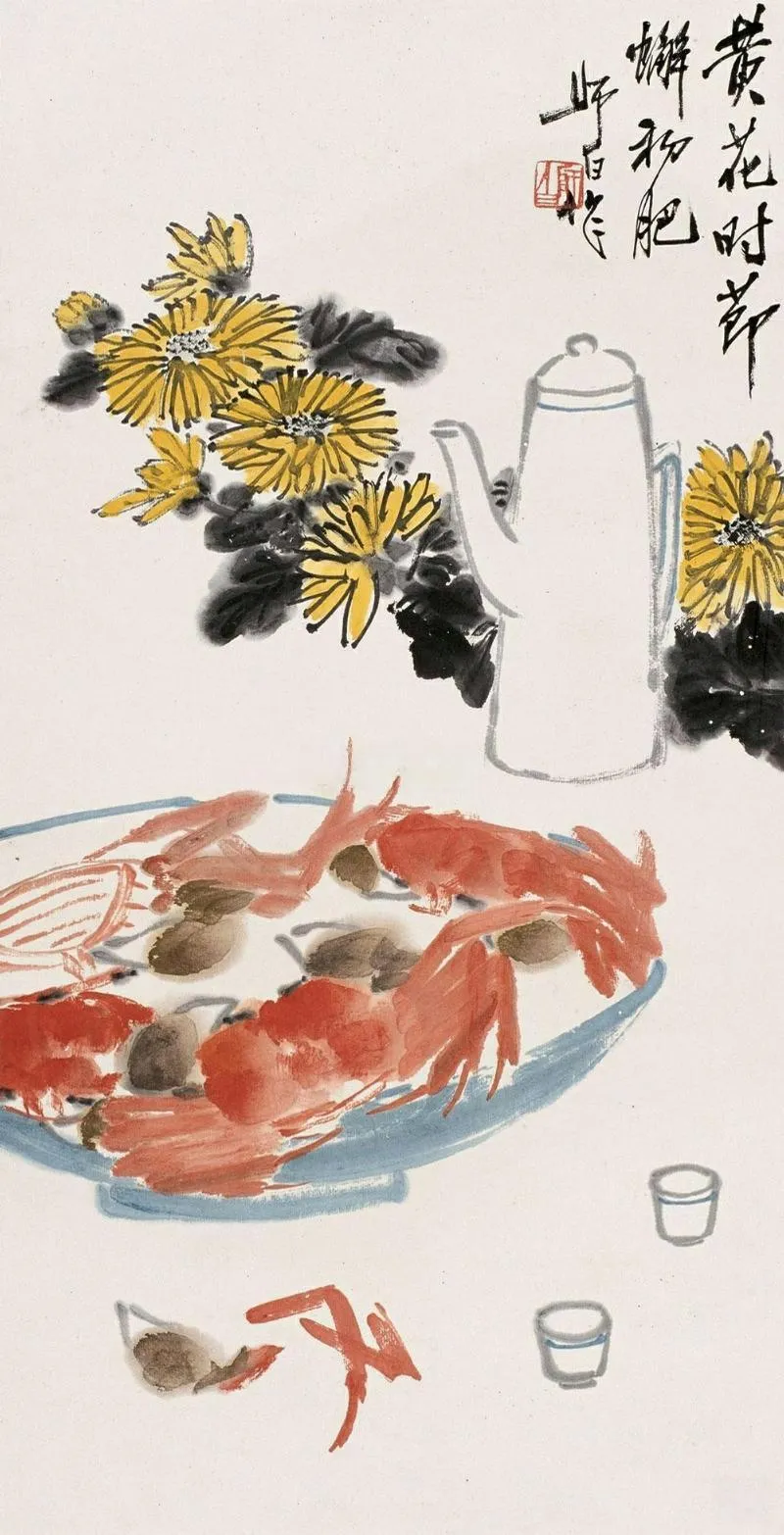
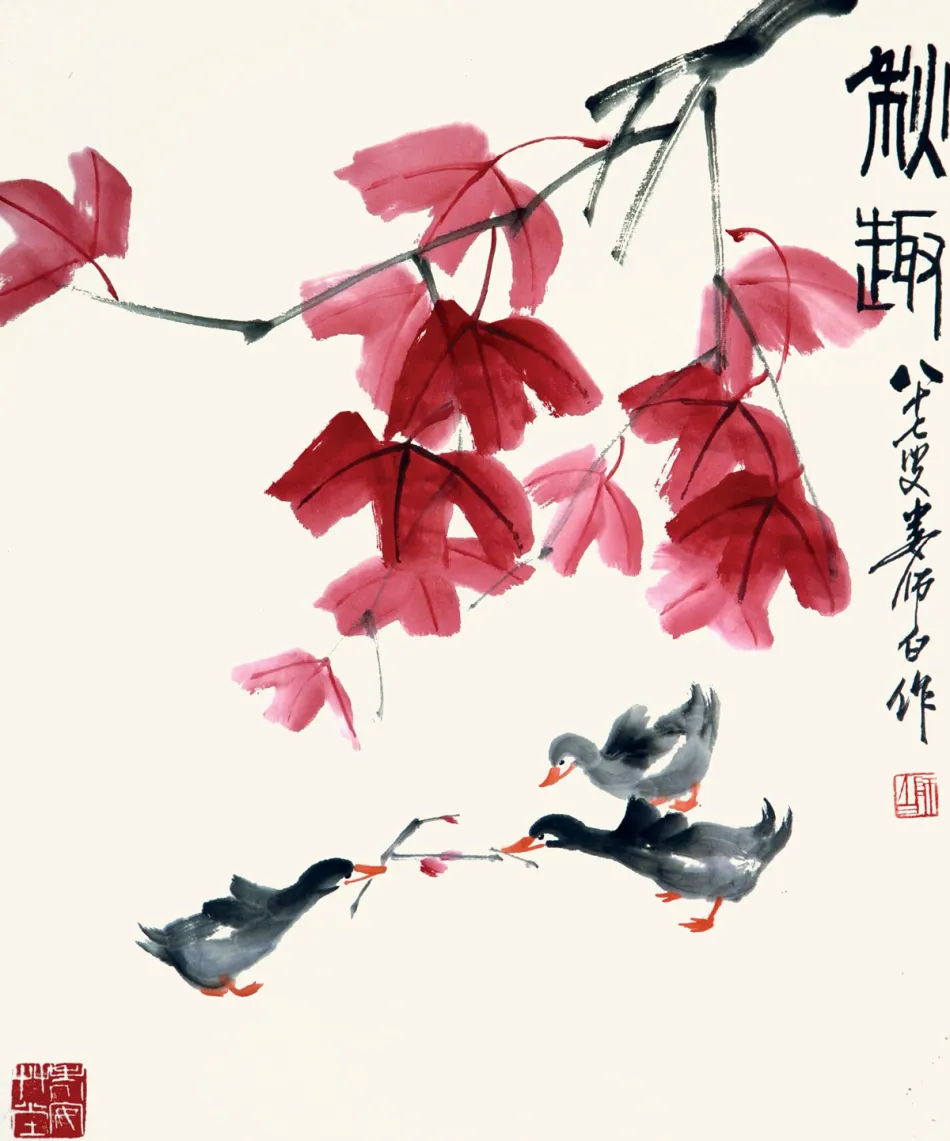
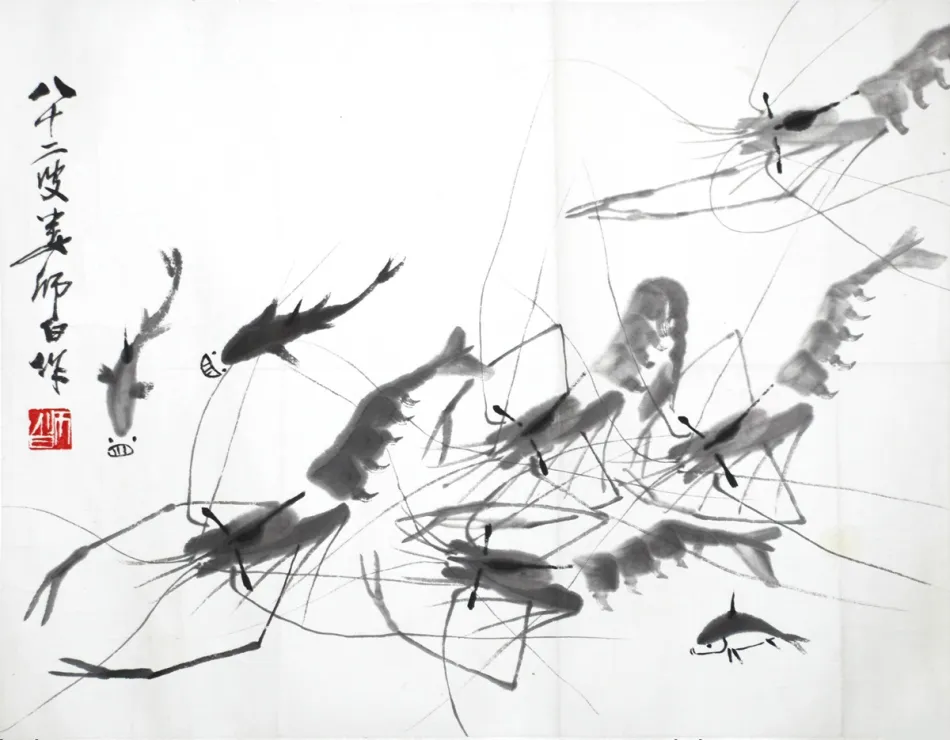

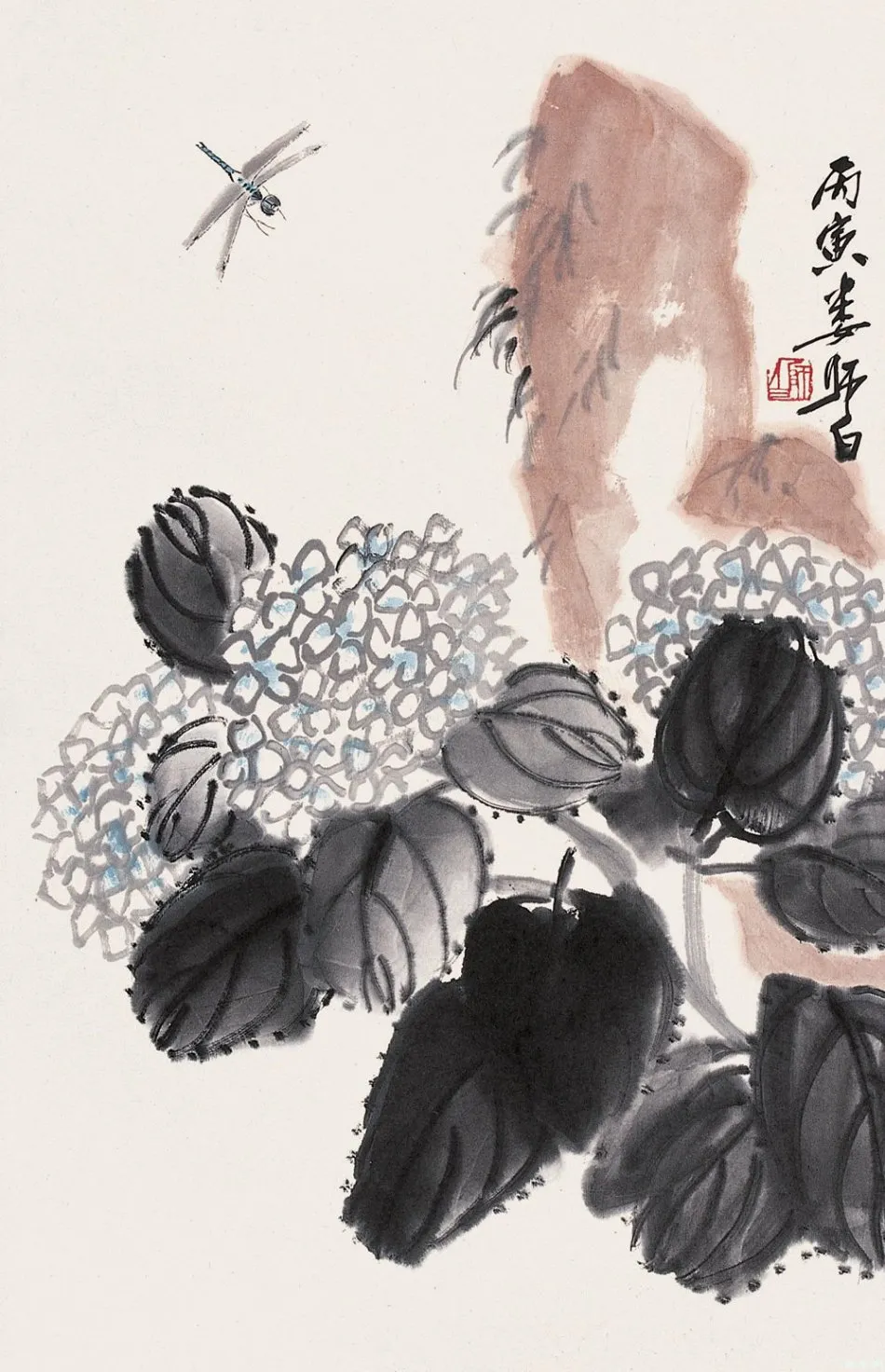
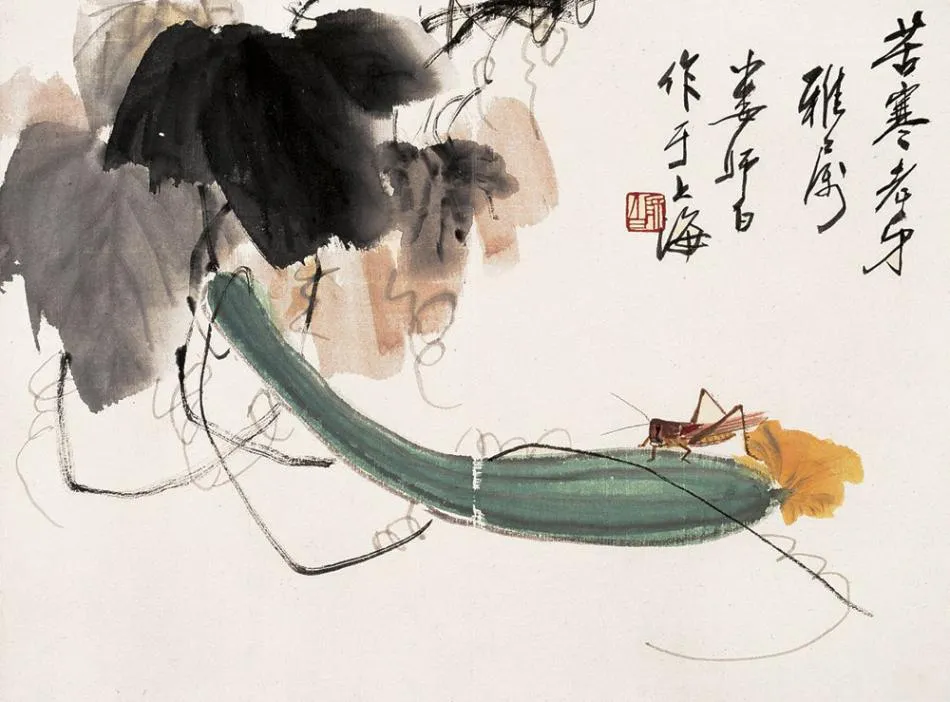
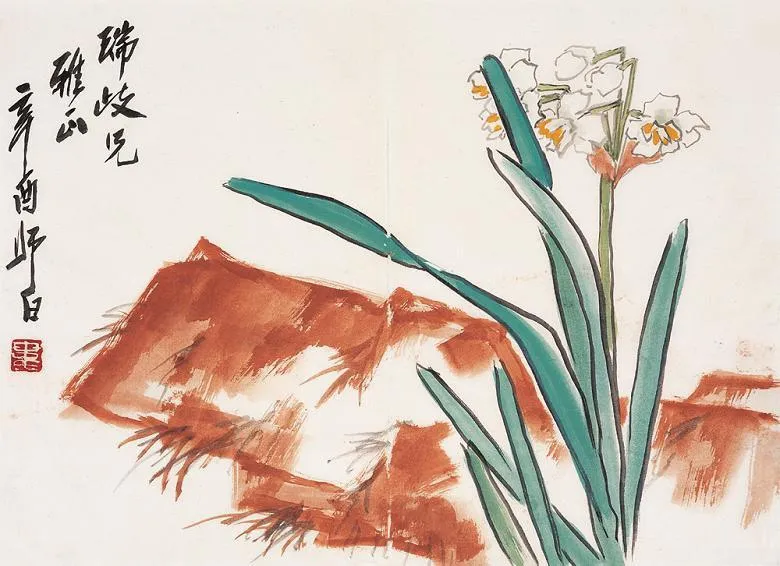
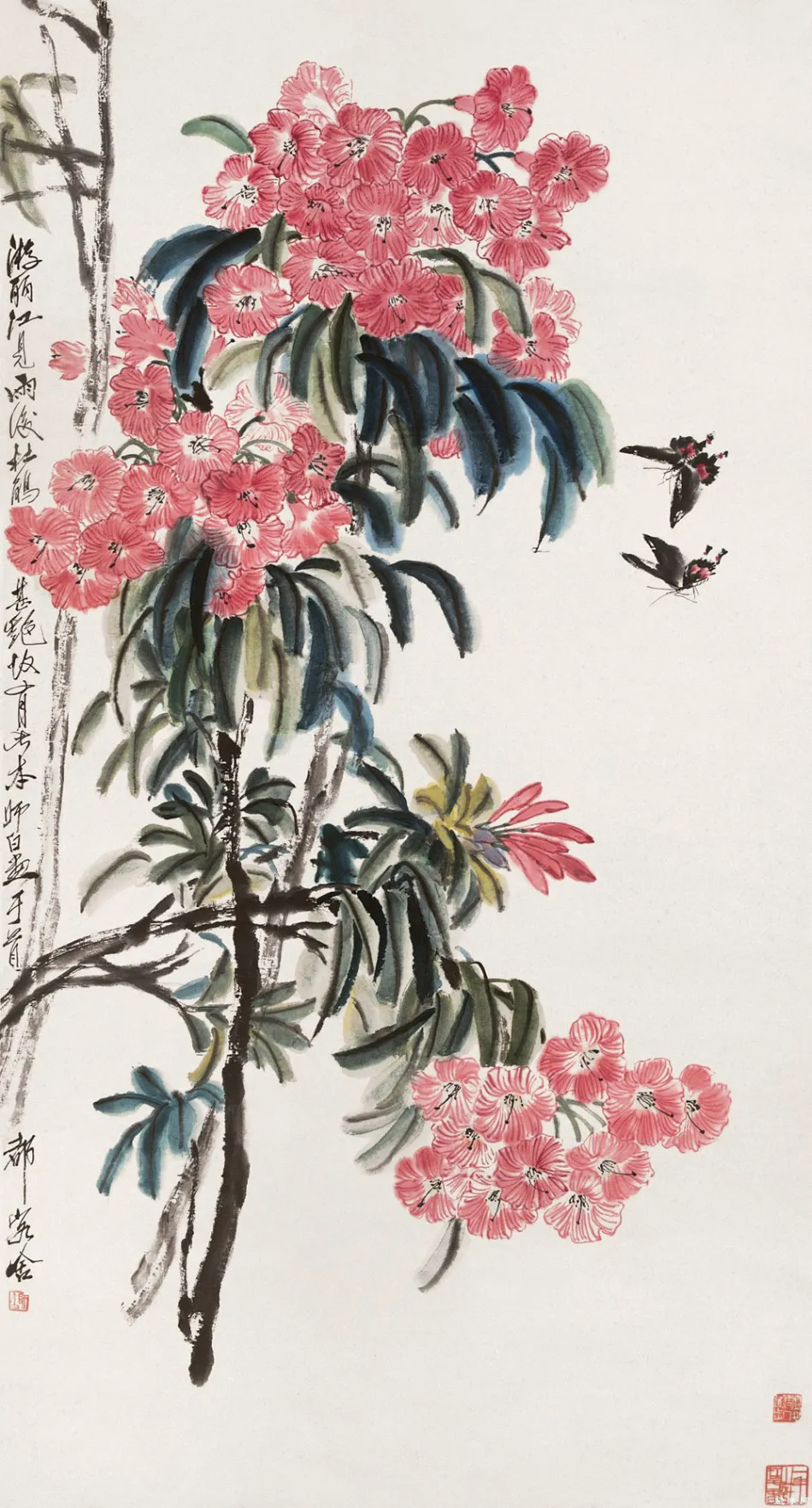
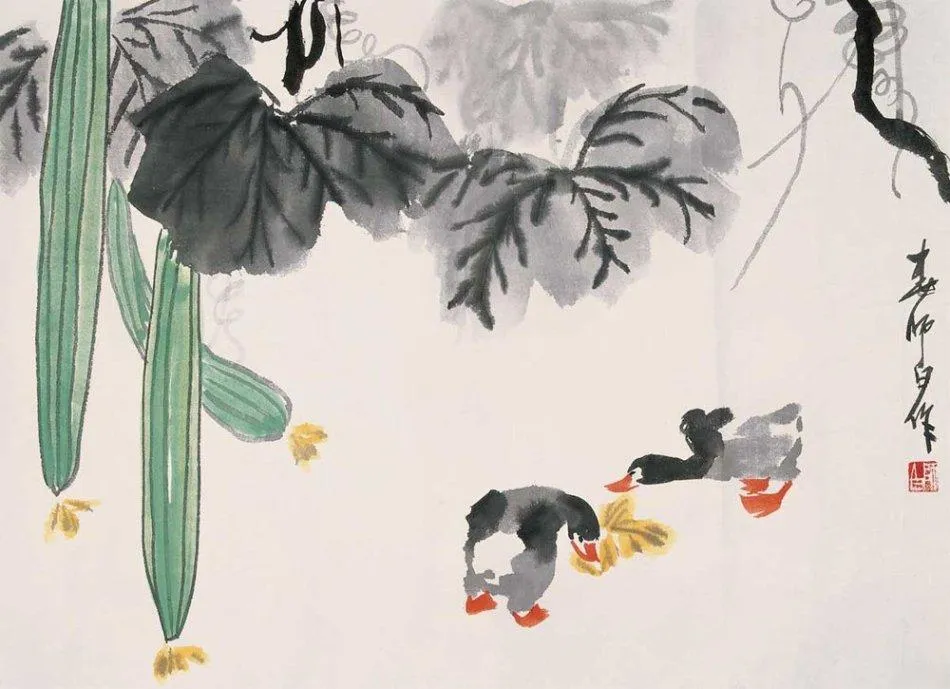
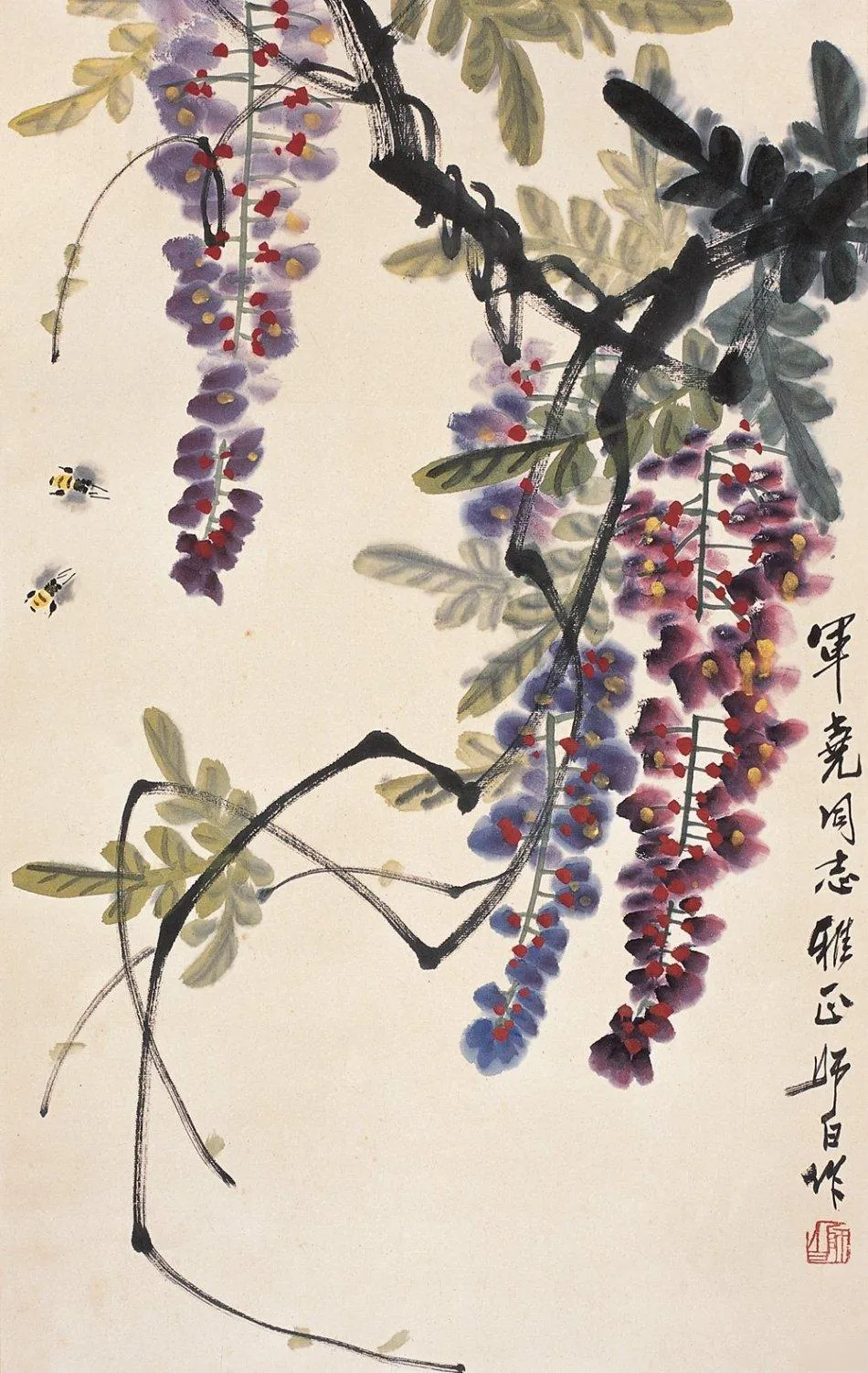
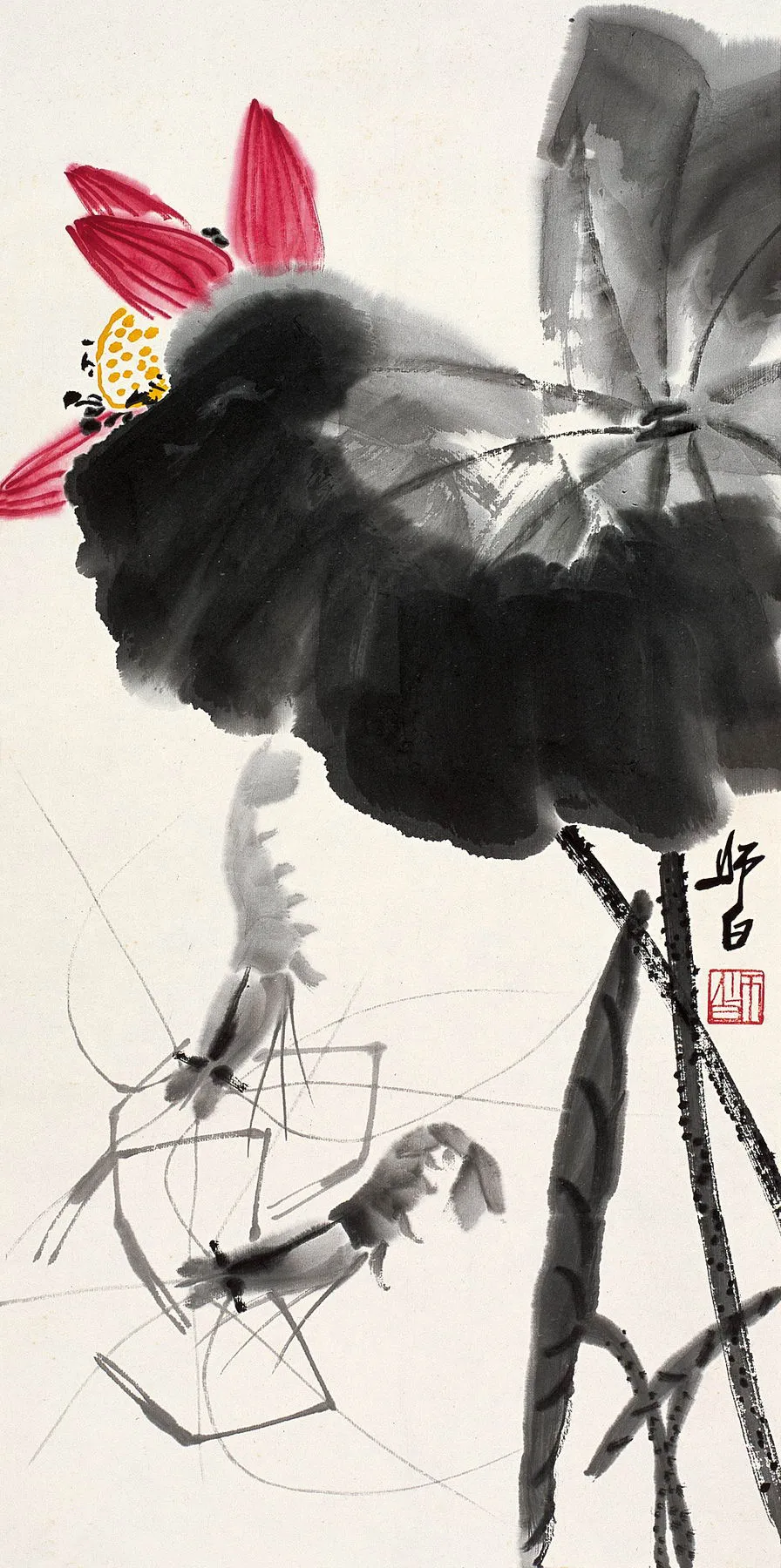
娄师白执齐派之道,承技传神,技与神并重。齐派精神涵天人合一之理,融和谐之美,师古人造化。娄氏遵循国画衍变之道,渐而变之,承齐派,亦显个性与识见。其大写意虽似齐翁,细品自有不同。谙“学我者生,似我者亡”之理,于学悟道,渐成自家风貌。受传统文人画与中西融合之教,掌写实造型之技,巧融写意,别具风韵。
娄师白重生活体验,勤于游历,遍览山河,数次出访异邦,拓宽题材,充实气息。新题材带来构图、笔墨、色彩之变,作品愈趋现代,写意更臻强化。其以精炼豪放之笔,抒内心喜悦,笔墨严谨自由,大家风范尽显。晚年犹怀“奋力一搏”之志,承齐翁“衰年变法”精神,探索新题材、新风格,以国画创新为快。自跋云:“入耄耋,虽不敢有‘少年狂’之想,然犹存奋搏之念。”其画承齐神,融己意,成当代巨匠。
Luo Shibai adhered to the Qi school’s principles, integrating technique and spirit. The Qi school’s spirit encompasses the aesthetic ideal of unity between heaven and man, harmonious beauty, and the principles of following ancient masters and nature. Luo followed the evolution of traditional Chinese painting, making gradual changes while inheriting Qi’s style and displaying his own individuality and insight. Although his large freehand style is similar to Qi’s, a closer look reveals distinct differences. Understanding the principle “Those who learn from me live, those who imitate me perish,” he has developed his own style through learning and insight. Trained in both traditional literati painting and the integration of Chinese and Western art, he masterfully combines realistic modeling with freehand expression, creating a unique style.
Luo Shibai valued life experiences, traveling extensively, and visiting many places, both domestic and abroad, broadening his subject matter and enriching his artistic vision. New subjects led to changes in composition, brushwork, and color, making his works increasingly modern and enhancing their freehand quality. With refined and bold brushwork, he expressed his inner joy, demonstrating a rigorous yet free style, and exhibiting a grand manner. In his later years, he maintained a spirit of “striving for one last effort,” inheriting Qi Baishi’s “late-life reforms” spirit, and exploring new subjects and styles, finding joy in innovating traditional Chinese painting. In his self-inscription, he wrote: “Entering my old age, though I dare not have the ‘old man’s youthful ambition,’ I still harbor a desire to strive.” His paintings, inheriting Qi’s spirit and blending his own ideas, established him as a major figure in contemporary art.
责任编辑:苗君
